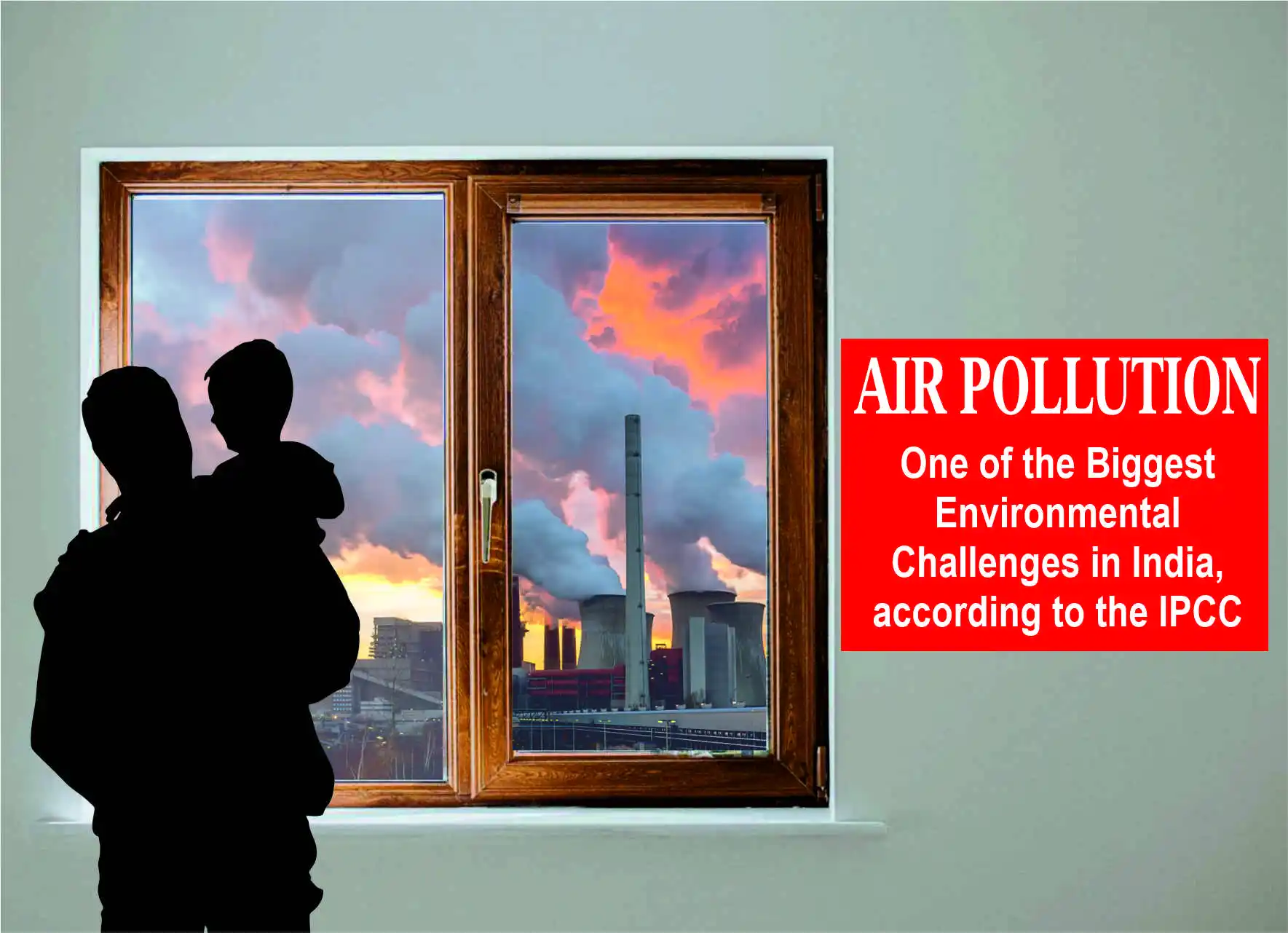Air Pollution: One of the Biggest Environmental Challenges in India, according to the IPCC
11 Apr 2024
The urgency to tackle climate change is stronger than ever. The recent IPCC (Intergovernmental Panel on Climate Change) report highlights a rapid acceleration of the crisis, emphasizing the need to limit global warming to 1.5 degrees Celsius. Deforestation, droughts, air pollution, and plastic waste are all major contributors to global warming, and its consequences are felt worldwide.
However, the impact is not equally shared. Developing countries, despite minimal contribution to the global warming, often suffer the most. Limited financial resources make it difficult for them to address the crisis and mitigate extreme weather events.
India's Fight with Air Pollution
Air pollution
A recent report found 63 of the world's 100 most polluted cities are in India, with Delhi holding the unfortunate title of most polluted capital. The situation is severe, with PM2.5 levels exceeding WHO guidelines by over 10 times in nearly half the country's cities.
What is causing this?
Several factors contribute, including vehicle emissions, industrial waste, smoke from cooking and construction, crop burning, and power generation heavily reliant on fossil fuels. India's dependence on coal, oil, and gas makes it the world's third-largest polluter, releasing over 2.65 billion metric tons of carbon annually.
In March 2020, the strict lockdown enforced to control the spread of Covid-19 offered an unintended benefit – cleaner air. With human activity grinding to a halt, air quality across India saw a dramatic improvement. Compared to 2019, the average daily Air Quality Index (AQI) in major cities reduced by more than half during March-April 2020. This significant drop from 656 in 2019 to 306 in 2020 highlights the undeniable link between human activities and air pollution levels.
The air quality gains, however, were short-lived. By 2021, India was back to being one of the world's most polluted countries, second only to Bangladesh. This rise crushed a three-year trend of improvement and underscored the severity of the problem.
Scientists warn of the long-term health consequences of persistent PM2.5 exposure, including heart and lung diseases, and estimate it contributes to a staggering 7 million premature deaths globally each year. The situation became so critical in November 2021 that authorities were forced to shut down several large power plants near Delhi to curb the worsening air quality.
Air Purification Technology – A Concrete Answer to the Pressing Problem
India's fight for clean air extends beyond its bustling cities and polluted waterways. The harsh reality is, the battle for healthy air continues indoors as well.
Outdoor Pollution Seeps In: While significant efforts are underway to address outdoor air pollution, the tiny PM2.5 particles we discussed earlier can easily infiltrate homes and buildings. These particles pose a significant health risk, linked to heart and lung disease, even within the supposed safety of our homes.
Limited Escape: Unlike outdoor air, indoor spaces often lack proper ventilation, especially during colder months when windows are closed. This stagnant air traps pollutants like dust, allergens, and even harmful chemicals from household products, further compromising indoor air quality.
Advanced Air Purification System: A Breath of Fresh Air
Here's where advanced air purification systems can play a critical role in India's fight for clean air. These sophisticated devices are equipped with multiple filtration technologies, including HEPA Filters, activated carbon filters, UV-C, and ionizer.
By utilizing an advanced air purifier, you can protect your family from the harmful effects of these tiny particles, even when outdoor air quality is poor. They are engineered to remove allergens, dust, and harmful gases, creating a healthier breathing environment.
While advanced air purifiers cannot single-handedly solve India's massive environmental challenges, they offer a powerful tool for individuals and families to take control of their indoor air quality and breathe easier within their homes.
